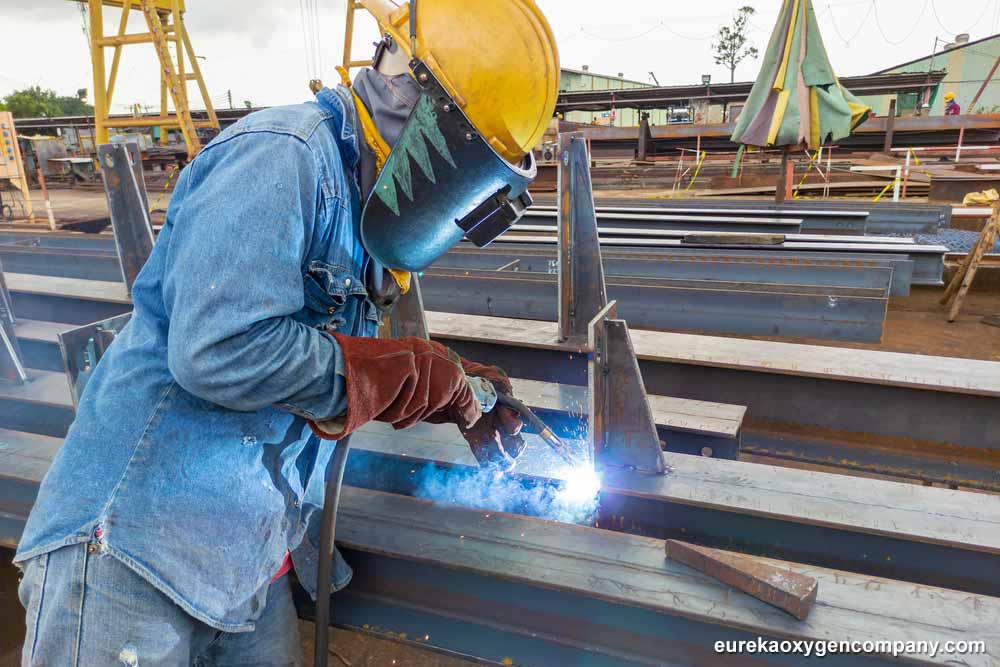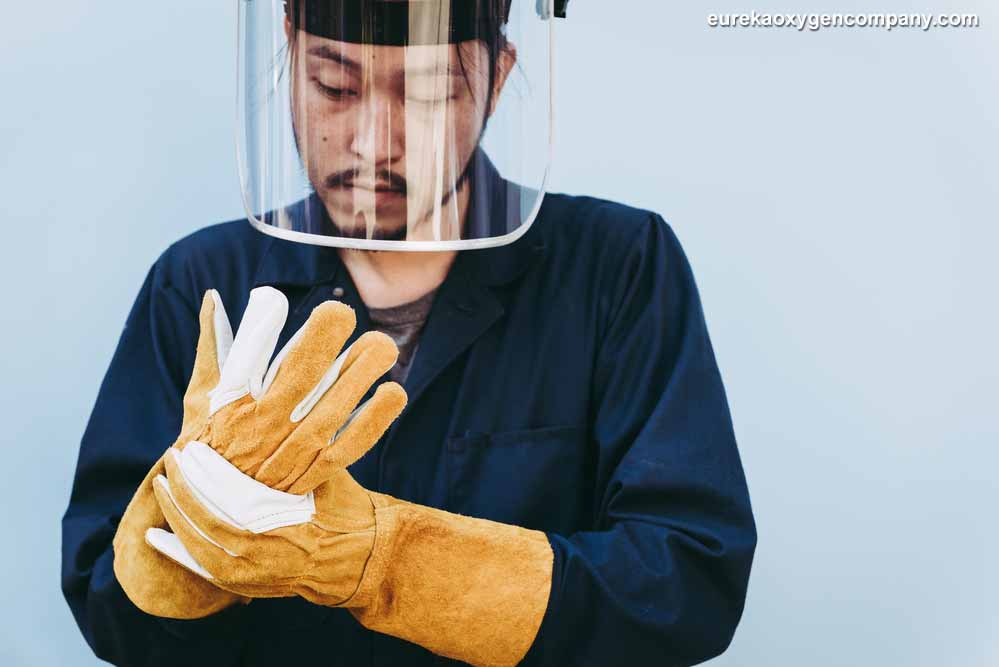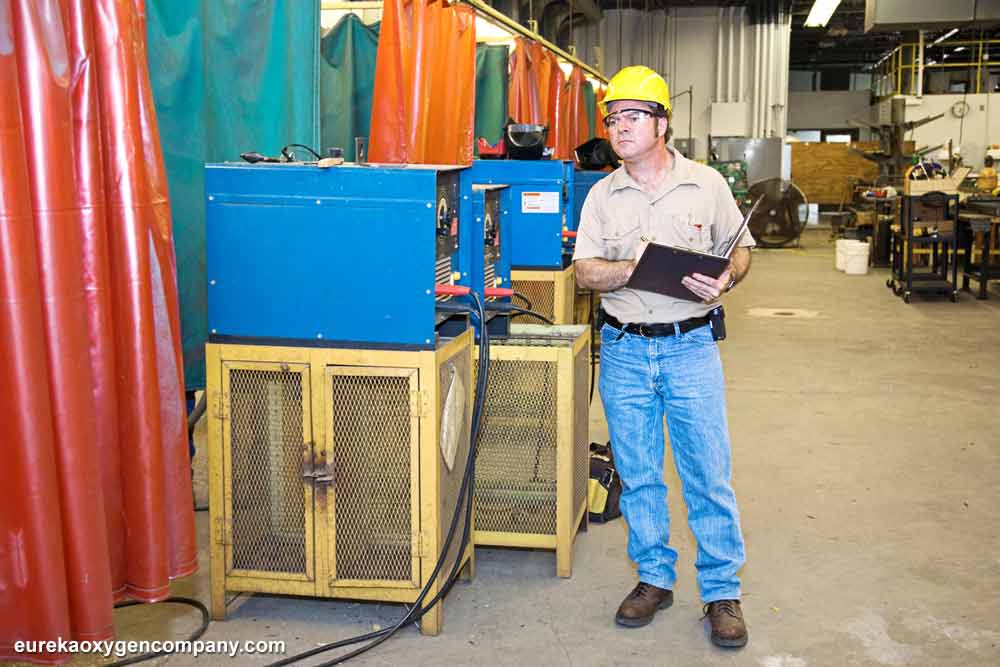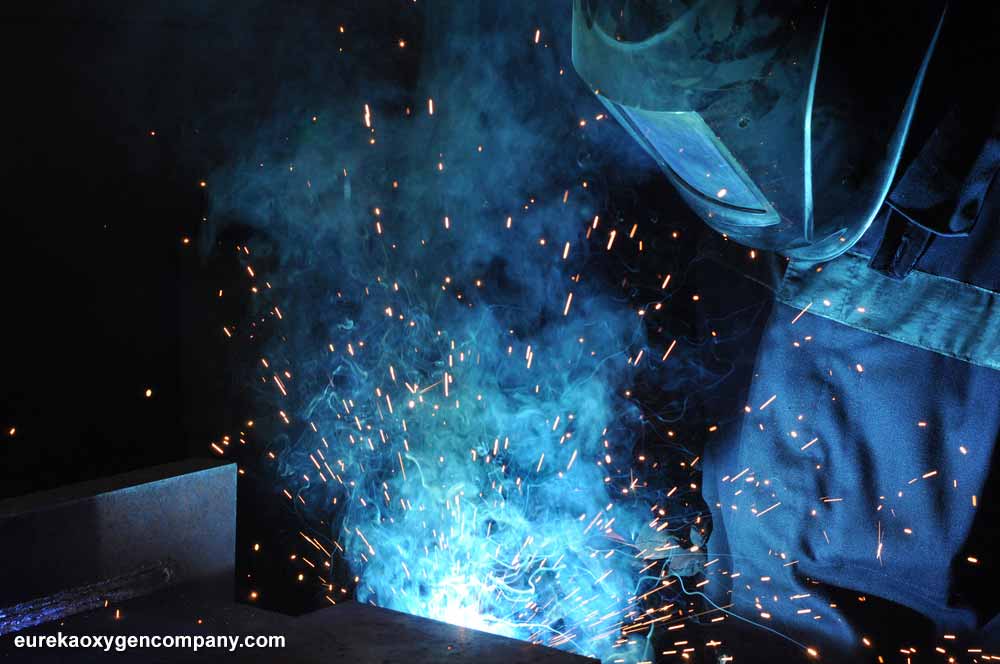Learn about welding safety and welding safety regulations to maintain a secure workplace
Welding PPE (Personal Protective Equipment) is a specific set of gear welders are required to use while working to protect them from potential harm, including burns, bright lights, radiation, fumes, and more, which can lead to severe health complications.
Welding Safety 101: What Is Welding PPE & Why Use It
With appropriate welding safety gear, the risk of encountering harm is shallow. Depending on the type of work you do, you might need a different set of personal protective equipment than others, or you may need to include a few pieces that others might not. Other factors such as comfort and budget play a key role in the selection of welding PPE.

Welding PPE Used To Enhance Safety
There is a wide range of options when it comes to welding PPE apart from the well-known welding helmet and welding gloves. Here’s a brief but informative guide on the different gear available when working, and the various welding hazards they protect you against.
Eye & Face Protection
Eye protection is essential when welding, as many eye injuries can occur from intense light and radiation that a welding arc can produce.
To protect your eyes and face, consider the following welding PPE:
- Welding helmet. There are two common types, fixed shade —with a dark tinted lens, typically a shade #10 that allows you to see through it— and auto-darkening helmets — which allow you to select the shade you need for a specific task and will automatically shift to it.

- Face shield. Face shields are lighter in weight, offer a bit more visibility, and are great for simple tasks. They come with a tinted lens, and shade #10 is the most common one used.
- Goggles. Depending on the welding task you want to do, you’ll need specific eye-protection equipment.
All of these pieces of equipment protect you from radiation, flying particles, intense light, irritation, and chemical burns.
Skin & Body Protection
Skin and body protection is equally important in welding safety. According to welding safety regulations, you should wear:
- Flame-resistant clothing. Including jackets and shirts (with flaps over pockets or taped closed), pants (with no cuffs), and boots (specially designed boots for welding, made with rubber soles and a thin sheet of steel to protect your toe from injuries).
- Welding gloves & headwear. Insulated gloves and fire-resistant skull caps are other necessary protection as well.
Skin and body protection is essential to protect yourself from UV radiation, sparks, open flames, and hot metal. When browsing for flame-resistant clothing, make sure to invest in pieces made from heavyweight, tightly woven, 100% wool or cotton.
Respiratory Protection
Welding respirators are filtering devices that protect against fumes and oxide, and there are a few different types you should know about:
- Non-powered respirators rely on your breathing to draw air through the filter
- Powered respirators use a motor to conduct this process, giving you a supply of clean air.
Fume extraction is critical in welding, and when other fume-extraction methods are unavailable (such as downdraft tables, and extraction arms) using respiratory protection is mandatory. To select the most appropriate respirator, you should consult an experienced safety professional or occupational hygienist.
Maintaining & Caring For Your Welding PPE
Personal protective equipment is essential to prevent injuries and health complications. To ensure your gear is in optimal condition at all times, there are a few things you can do.

Properly Store
Store your PPE in a designated area that is resistant to all weather conditions. Preferably, store your gear in different areas depending on the types of PPE to properly organize them. This palace should be away from direct light, extreme moisture, and extreme temperatures.
Regularly clean your gear to remove dirt and debris that can later accumulate and start compromising its effectiveness.
Regularly Inspect
Check for tears, cracks, rips, or any other sign of damage that can compromise the goal of your protective equipment. You should also replace worn parts, such as straps, and filters to keep your gear usable.
Another thing most people tend to forget about is checking the expiration date. Some materials may degrade over time, which is why they have an expiration date set by the manufacturer.
By establishing a daily or weekly checking routine of your protective equipment you can ensure long durability and optimal protection.
Final Words
In this post, we talked about the importance of welding safety and following welding safety regulations to prevent injuries and irreversible health damage.
Eureka Oxygen has a robust supply of welding supplies, including welding PPE, special equipment, and cylinder gasses. We cover a wide range of locations and delivery areas. Contact us today!

